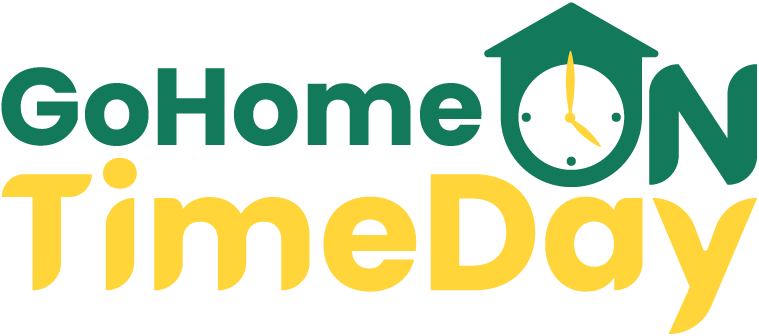I am deeply passionate about the impactful change that coaching can bring forth, creating notable improvements for both individuals and institutions. The application of coaching methods and a focus on personal development is paramount. From my previous position as a coach, I’ve been fortunate enough to observe these monumental changes firsthand.
In this article, I’ll share my insights and practical examples of effective coaching. Whether you’re a leader seeking to develop your team or a professional interested in peer coaching, there’s something here for you.
Let’s explore how we can harness its power and truly make a difference.
Key Takeaways
- It is a powerful tool for transforming individuals and organizations.
- Effective coaching programs lead to significant growth in skills and abilities.
- Tailored development plans and personalized training programs enhance performance and foster a culture of continuous learning.
- Targeted employee development strategies advance toward organizational objectives and promote individual skills through personalized Training.
Setting the Stage for Development: Understanding the Importance of Coaching

As we move forward, let’s focus on leaders’ crucial role in employee development.
We’ll explore the potential of coaching programs as tools for professional growth and demonstrate how they can help employees reach their developmental goals.
It’s essential to grasp its importance in setting the stage for development.
Emphasizing the Core Role of Great Leaders in Employee Development
I’m convinced that, in the realm of employee development, a great leader’s role is paramount for setting goals and helping employees with the skills for personal development and improving job performance; a great leader recognizes the potential in their employees and guides them towards achieving it.
Great leaders aren’t just bosses or managers; they’re role models who inspire and motivate their teams to strive for excellence.
They understand the importance of coaching and developing other’s examples to help, and they’re devoted to helping their employees develop their skills.
They create an environment conducive to learning and growth and invest time and energy in providing positive feedback.
A great leader recognizes the potential in their employees and guides them toward achieving it.
In essence, their core role in employee development must be balanced.
They’re the catalysts that transform potential into performance.
Unveiling the Potential of Mentoring Programs for Professional Development
In this section, we’ll delve into the potential of programs as a crucial tool for professional development. Unveiling the potential of such programs, it’s clear they’re indispensable in coaching and developing others.
Examples of how programs lead to significant growth in employees’ skills and abilities. They foster an environment that encourages continuous learning and improvement. Through these programs, employees are empowered, their confidence is boosted, and they’re equipped to set goals and take on greater responsibilities.
Coaching helps employees develop not just professionally but personally, too. Ultimately, a well-implemented program paves the way for a culture of continuous professional development, creating a competent, confident, and committed workforce.
Programs are essential for nurturing leadership skills and helping employees develop within the organization.
Demonstrating How Coaching Helps Employees Meet Development Goals
Let’s now turn our attention to the employee’s perspective, demonstrating how effective leaders facilitate their skill acquisition and help them meet their individual development goals.
The development process is valuable in employee training, empowering individuals to excel in their roles and achieve their career objectives. Through examples and fostering growth in others, we can see its transformative impact on employees’ performance.
It bridges the gap between where they are and where they want to be, further underscoring its importance. It’s not just about improving skills but also about aligning these improvements with their personal goals and career goals.
Coaching conversations and development programs can help employees develop new skills and grow in their careers.
Exploring Best Practices to Develop Coaching Skills

I’m excited to explore some of the best practices for developing coaching skills.
We’ll look at the importance of active listening, positive feedback, and adaptability in the process.
These elements are crucial in enhancing our abilities and helping others grow.
Embracing Active Listening as a Key Coaching Skill
As we delve into the realm of coaching skills, it’s clear that a coach’s ability to embrace active listening is paramount.
This key skill enables superior understanding and responsiveness. It’s more than just hearing; it’s absorbing and interpreting the underlying messages. It provides a solid foundation, fosters trust, and encourages open communication.
Consider these examples where it played a pivotal role. In one, a coach accurately identified an athlete’s concern simply by noting tone and body language changes.
In another, a corporate coach helped an executive overcome a hurdle by truly understanding the complexity of the situation. These instances highlight why it is an indispensable part of skills.
Promoting Constructive Feedback as an Integral Part of the Coaching Process
Moving forward, I’ll highlight the importance of staff development and promoting positive feedback in the process and how it plays a critical role in developing employees’ effective skills.
It is balanced, specific, timely, and a cornerstone of effective coaching and mentoring.
In any session, it’s important to provide feedback that not only highlights areas of improvement but also acknowledges the strengths of the individual.
This fosters a culture of continuous learning and maintains the coachee’s motivation.
Harnessing its power opens up numerous development skills opportunities, allowing individuals to expand their skills, adapt to new challenges, and ultimately, reach their full potential.
Let’s remember the process is a two-way street, and positive feedback is its lifeblood. Coaching also helps employees learn new skills and adapt to changes in the work environment, ultimately improving their employee performance and helping them grow and develop. This is crucial for achieving business outcomes and meeting team goals.
Encouraging Adaptability and Flexibility in Coaching Methods
While focusing on the development of mentoring skills, it’s essential to encourage adaptability and flexibility in methods. This involves exploring best practices that can enhance these traits.
You should be open to adjusting your strategies to meet the unique needs of those you’re helping develop. For example, if a method isn’t working for someone, feel free to change it. It isn’t a one-size-fits-all practice. It’s about finding the best way to help others grow.
Embracing adaptability and flexibility in your methods improves your effectiveness as a coach and empowers those you’re coaching.
Ultimately, it’s about creating a responsive, dynamic environment that fosters growth and development.
Practical Examples of How Leaders Develop Others

Let’s now discuss how leaders practically foster growth in others.
We’re going to look at how they cultivate employee growth with tailored development plans, enhance performance through personalized training programs, and achieve organizational objectives with targeted employee development techniques.
These examples will illustrate how effective leadership can directly contribute to the growth and development of team members.
Cultivating Employee Growth through Tailored Development Plans
In my experience, many leaders need to pay more attention to the power of tailored development plans when it comes to cultivating employee growth. By implementing these plans, you provide the roadmap for your employee to develop, aligning their personal growth with the company’s objectives. They offer clear direction, setting expectations and goals, thus creating a conducive environment for improvement.
Let’s consider a few coaching and develop others examples. Suppose you have a team member showing great potential in project management. Your development techniques might include specific training courses, mentoring, or on-the-job experiences to enhance your skills.
In essence, tailored development plans promote individual growth and contribute to the organization’s overall success. Remember, the key is to personalize these plans according to each employee’s unique needs and potential.
Coaching requires a commitment to help them develop. As a leader, you should lead by example and work alongside your employees to improve their performance. These plans are examples of coaching techniques that institutions like Harvard Business advocate to help employees learn new skills and take time to develop their full potential.
Driving Performance through Personalized Training Programs
By investing in human resource-focused personalized training programs for my team, I can drive performance and foster a culture of continuous learning within the organization.
These programs are tailored to each employee’s existing skills and potential capabilities, meaning they’re relevant, inspiring, and employee engagement. This is an effective way of coaching and fostering growth in others – examples in my own experience highlight the significant improvement in team performance.
These personalized programs have led to a noticeable increase in productivity, skill utilization, and overall job satisfaction, providing development opportunities that team members need to succeed.
With the right Training and development initiatives, we can improve performance and demonstrate a commitment to our team’s growth. This, in turn, encourages a positive, ambitious attitude throughout the organization.
Achieving Organizational Objectives through Targeted Employee Development Strategies
Harnessing the power of targeted employee development techniques, I’m advancing toward our organizational objectives and boosting overall team competence.
As an organizational leader, I’ve observed how purposeful coaching and fostering growth in other’s examples can greatly impact our results.
Here’s a table featuring some of the strategies I’ve used and their outcomes:
| Development Strategy | Outcome |
| Personalized Training | Boosted individual skills |
| Mentoring Programs Enhanced | Leadership Capacity |
| Job Rotation | Exposed to various roles |
| Continuous Feedback | Cultivated a growth mindset |
| Succession Planning | Ensured business continuity |
Unveiling the Power of Peer Coaching in the Workplace

Let’s now turn our attention to the potential of peer mentoring in the workplace.
We’ll explore how it fosters learning and development by presenting inspirational role models and reflecting on real-life examples where it has excelled.
Lastly, we’ll tackle the hurdles that often come with implementing it and discuss how to overcome them.
Inspiring Role Models- How Peer Mentoring Encourages Learning and Development
A peer’s influence often unlocks the potential for unprecedented learning and growth in the workplace. This is a prime example of how the best leaders can coach employees to help them develop their skills.
It’s not just about improving skills; it’s about inspiring influential figures that foster a culture of continuous learning and development. I’ve seen first-hand how it encourages learning and advancement in unexpected ways. Coaching aims to empower, challenge, and inspire employees to develop their skills, ultimately aligning with business goals.
It’s not just about passing on knowledge; it’s about using each interaction to empower, challenge, and inspire. The coaching and fostering growth in other examples I’ve witnessed through it have been transformative, sparking new ideas and fostering a deeper understanding of the tasks at hand.
This skill development and the ability to develop others through coaching can help individuals transition into new roles and become influential figures within the organization.
Its power lies in its ability to inspire influential figures and encourage a culture of continual learning and advancement.
Analyzing Real-Life Examples of Successful Peer Mentoring Scenarios
During my years working in various organizations, I’ve observed some genuinely impactful examples of successful coaching scenarios that reveal the power of this strategy in the workplace.
In one instance, a coach and coachee worked together to enhance the coachee’s presentation skills. The coach provided consistent coaching and feedback, and their conversations were always constructive. This successful coaching led to the coachee delivering an impressive presentation at a company event.
In another example, a peer coach helped a co-worker increase their productivity by sharing time management strategies, which helped build a more efficient work routine. These examples help demonstrate its transformative power.
By fostering a culture of continuous learning and advancement, we can all contribute to each other’s success, which involves a coach’s support to help us achieve our goals.
These examples help demonstrate its transformative power. By fostering a culture of continuous learning and advancement, we can all contribute to each other’s success.
Overcoming Challenges and Obstacles in Implementing Peer Mentoring
While I’ve seen many successes, I’ve also encountered a number of challenges and obstacles in implementing it. Still, I firmly believe in the power it holds for workplace development. It’s not always easy, but overcoming challenges and obstacles is crucial to coaching others.
As a role model for others, displaying perseverance and resilience is important.
To illustrate, I’ve prepared a table:
| Challenge | Solution | Emotional Impact |
| Resistance to change | Clear communication of benefits | Empowerment |
| Fear of criticism | Promote a safe, non-judgmental environment | Confidence |
| Time constraints | Efficient scheduling and prioritization | Achievement |
Implementing it does have its hurdles. But, as the examples show, overcoming these can lead to a stronger, more effective workplace.
Measuring the Success of Your Coaching Program

Let’s turn our attention now to the crucial task of assessing the effectiveness of your program.
We’ll look at the setting and use KPIs to monitor your program’s success, gather employee feedback to enrich the experience and make necessary adjustments to ensure long-term growth and improvement.
It’s all about knowing what works and what doesn’t and being willing to adapt for the sake of continuous development.
Implementing KPIs to Monitor the Effectiveness of Your Mentoring Program
In order to gauge the success of my program, I’ve implemented KPIs as a means of tracking its effectiveness over time.
These KPIs allow me to measure the progress of individuals in the program, offering tangible coaching and developing others’ examples.
I can adjust my approach to meet their needs if certain areas need improvement.
Implementing KPIs not only provides evidence of the effectiveness of your program but also helps you monitor progress in real-time.
This real-time monitoring leads to a more dynamic, responsive program.
It highlights the areas that need improvement and where the program excels.
This way, I can ensure the continuous growth and success of those I coach.
Capturing Employee Feedback to Enhance the Coaching Experience
Gathering employee feedback is a crucial part of refining my strategies and measuring the success of the program. This capturing employee feedback process allows me to understand if my coaching and development and developing others’ examples are resonating and creating impact. By actively seeking out and incorporating this feedback, I can enhance the experience for everyone involved.
Coaching is an essential skill for numerous reasons. It encourages professional growth, boosts morale, and fosters a culture of continuous learning. However, its importance extends beyond these immediate benefits. By regularly capturing and analyzing feedback, its importance becomes clear. It paves the way for an iterative process of improvement where I can fine-tune my approach, ensuring that every session is as effective and beneficial as possible.
Adapting and Adjusting Your Mentoring Program for Long-term Success
Beyond simply gathering feedback, I’m also focused on adapting and adjusting my program for long-term success, which involves measuring the program’s success in a consistent, meaningful way.
It’s crucial to evaluate both the short-term gains and the long-term impact to ensure it’s effectively helping to develop your team.
I’m refining the program based on the specific needs and goals of the team members, making it more customized and effective.
By continually adapting and adjusting, I’m setting the coaching and fostering growth in other examples in motion.
This approach allows me to monitor progress, identify areas for improvement, and ensure that the program demonstrates its value and contributes to the team’s long-term success.
Frequently Asked Questions
What Are Some Common Mistakes to Avoid When Coaching Others?
In my experience, some common mistakes I’d avoid when coaching include not setting clear expectations, failing to provide positive feedback, and failing to take the time to understand an individual’s unique strengths and weaknesses.
How Can I Adapt My Coaching Style to Different Individuals’ Learning Methods?
I’m constantly adjusting my approach to fit each individual’s learning style. Depending on what’s most effective for the person I’m coaching, I’ll switch between visual, auditory, or kinesthetic methods. It’s all about flexibility.
How Do I Handle Resistance or Lack of Cooperation From the Person I Am Coaching?
When I encounter resistance in coaching, I reassess my approach, stay patient, and try to understand their perspective. Establishing trust, listening actively, and collaborating is crucial to overcoming barriers for a productive learning environment.
How Can I Maintain My Own Motivation and Enthusiasm While Coaching Others?
Maintaining my motivation while coaching can be challenging. I focus on their progress and potential. Celebrating their small wins, I’m reminded of the impact I’m making, which fuels my enthusiasm and keeps me motivated.
What Are Some Effective Strategies for Dealing With Conflicts That Might Arise During the Coaching Process?
Dealing with conflicts during any process can be challenging. I enjoy open dialogue, attentive listening, and empathy as effective strategies. It’s also essential to maintain an objective perspective during dispute resolution.
Conclusion
In conclusion, coaching and developing others isn’t just beneficial; it’s essential.
Adopting best practices, empowering leaders, encouraging peer coaching, and measuring results are critical to a successful coaching program.
Remember, your investment in developing others maximizes their potential and contributes significantly to your organization’s overall success.
So, let’s embrace coaching as a tool to unlock the power of our teams and drive our businesses forward.

